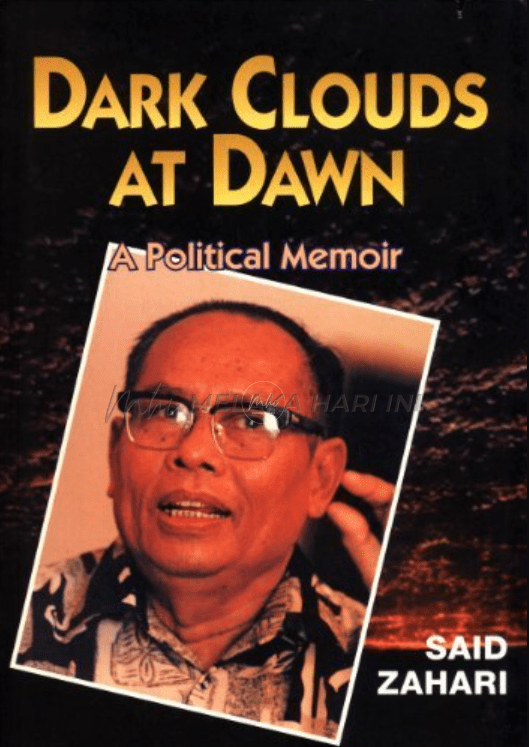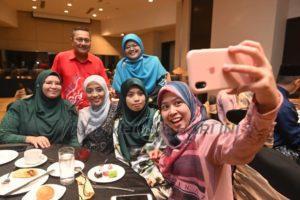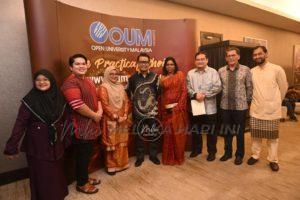
Malay Journalism, Berita Malai and the Singapura Years: Said Zahari on A. Samad Ismail
Said Zahari first knew A. Samad Ismail in 1953, after Samad’s release from his first political detention. He rejoined Utusan Melayu. Said learnt much about Samad from Salim Kajai. Said describes Samad as most colourful Malay journalist and enigmatic politician of the 1950s, 1960s and 1970s. Samad was legendary.
Adibah Amin, who was writer and editor at the New Straits Times (NST) in A. Samad Ismail: Journalism and Politics, edited by historian Cheah Boon Kheng (1987) related that nobody knew precisely what it was “he had been doing in the South.” There was “an aura that caused many to regard him with a mixture of awe and uneasiness. For it was never a halo. It has a hint, of fire, and unholy smoke.” I had never worked in the NST under Samad. I knew the man on a different circumstance.
Many were under Samad’s gaze. And many have stories about him have been told and retold to me over the years in the journalism school in the 1980s through 2007. These were shared by those whom I taught when they joined the profession; or by friends and associates in the newsroom. But it took me some decades to fathom the face making the confession on television in 1978. This time, I begin from where I ended my column on Samad in this newspaper – that I never got an answer from him on why he was sent to Jakarta in 1957.
The answer would be in Said Zahari’s Dark Couds at Dawn: A Political Memoir (2001). Salim, the son of legendary journalist Abdul Rahim Kajai, noted that there was not much of a stir in the Utusan Melayu office over the affair. Samad himself did not discuss it. Salim suspected that Yusof Ishak, general manager and editor-in-chief of Utusan as the culprit. “Not me,” said Yusof. The most convenient rumour among journalists and press circles at that time was that Tunku Abdul Rahman, the prime-minister-to-be of independent Malaya come 31 August 1957, did not want to see Samad – “a leftist socialist, ex-political detainee and founder member of the left-wing People’s Action Party (PAP) – continue editing Utusan Melayu in an independent Federation of Malaya.”
Tunku had once asked Said, “…hang ni orang Samad Ismail kah? (…are you a Samad Ismail man?) “Saya orang Utusan Melayu Tunku” (Tunku, I am an Utusan Melayu man”), Said replied. “Ha, itu baguslah” (Ha, that’s good), Tunku responded, with a smile. Said also has another theory – that for his own political reasons, Lee Kuan Yew was the one who suggested the idea to Yusof. This was to prevent Samad from joining Utusan’s editorial in Kuala Lumpur, while, at the same time, not wanting him to remain in Singapura, at least until after the Singapura general elections in 1959.
It should be noted that Samad had, by then, parted company with Lee and the PAP due to political and ideological differences. Samad was said to have remarked that Lee would one day become the “number one enemy of the people.”
Said reveals that in 1961, Lee publicly exposed Samad’s connection with the Malayan Communist Party in his radio talk on the “Battle for Merger.” In that talk, Lee did not mention Samad by name, but used his supposedly communist pseudonym of Zainal. Spelled backwards, Zainal became Laniaz, whom Lee said he had befriended after Laniaz was released from detention in 1953. They came into contact for the first time in 1951 after Samad was arrested for his allegedly anti-British activities. Yusof had appointed Lee as Utusan Melayu’s legal advisor, to act for Samad.
Said recalls Samad having a colourful background, “beginning from he time he was only 16 or 17 years old, when he opted to become a newspaperman soon after passing his Senior Cambridge examination in Singapura. Samad’s father, an official with the Singapore Malay Union (SMU), said to be the first Malay political party, agreed that Samad be trained at Utusan Melayu. According to Said, the SMU played an important role I getting Utusan Melayu published in 1939.
By 1942, Utusan Melayu had become Berita Malai under the Japanese occupation of 1942 (to 1945). The Japanese had used the newspaper as a propaganda machine. It was during his Berita Malai days that Samad first came into contact with the big names among Malay nationalist leaders and freedom fighters, in the likes of Ibrahim Haji Yaacob, Ishak Haji Mohamad, Dr. Burhanuddion Helmi and Ahmad Boestamam.
Many were also Indonesian revolutionaries and journalists who used Singapura as their base for the Indonesian Revolution. These included Abdullah Kamil and Thaharuddin Ahmad, the latter responsible for the Romanized edition of Berita Malai. Samad was with the Jawi edition of the paper. Thaharuddin, who later resided in Pulau Pinang, told Said that Samad had learnt his politics from him (Thaharuddin) and other Indonesian freedom fighters during the Japanese Occupation.
Samad, like Ibrahim Yaacob and Ahmad Boestamam, became a strong supporter of the Indonesia revolution. They had placed their hopes on the Japanese giving independence to Malaya as part of greater Indonesia. Later they felt betrayed, realizing that the Japanese wanted to keep Malaya as their colony, continuing their quest for an “orient.”
Said then recalls an article written about Samad by American journalist, James A Mitchener, in the radio service The Voice of Asia. According to Said, Mitchener’s description of Samad “had been perfect.” Said was particularly impressed by Samad’s answer to Mitchener’s question. Samad’s response: “You want to interview Malay leaders? You can’t. They are all in jail.”: Samad was of course referring to names like of Ishak, Dr Burhanuddin, Ahmad Boestamam, Shamsiah Fakih and Rashid Maidin.
Said had admired Samad even before “I joined Utusan Melayu sometime in 1951. Samad was variously reported by political writers as one of two intellectual Malay journalists recruited by English-educated radicals like Eu Chooi Yip and P.V. Sharma into the Anti-British League in the late 1940s. Another was Abdullah Sudin. Both were with Utusan Melayu. Said first met Samad at St. John’s Island detention camp in the early 1950s. Said describes Samad’s reaction as he approached him. Samad “gave me a curious look through his brown/black tinted glasses. He raised his shoulders a little and greeted me with a nod and a casual ‘how are you?’ But Samad did not seem to have seen me although he looked at me. He did not even smile when I greeted him…”
Said was not disappointed. Samad Ismail “became my role model in journalism as well as in politics although I then knew very little of both.”
#####
Next week:
Textbooks, Bookstores and Malay History
Langgani saluran Telegram kami untuk dapatkan berita-berita yang terkini.


